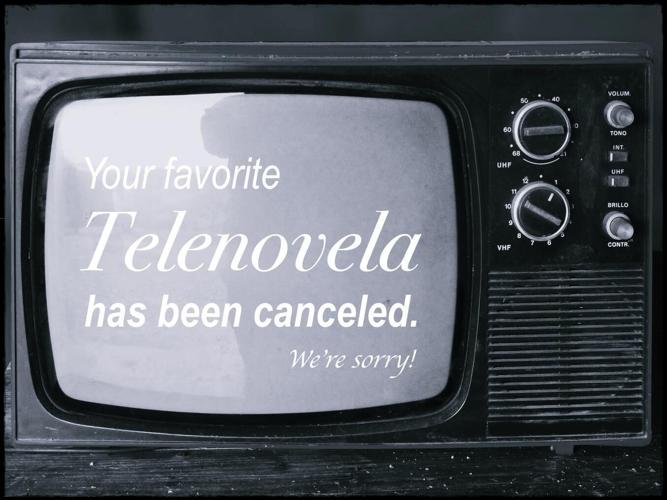Historically, Latinos in the U.S. have only been exposed to one form of television programming- telenovelas primarily produced in Colombia or Mexico. This format was originally produced for a Latin American market with a different set of experiences and a different set of socio-economic and educational opportunities that do not truly resonate with Latinos living in the United States.
So, the question that begs to be asked is, are Spanish-language broadcasters in the U.S. meeting the changing needs and tastes of Latinos living here? And, are they providing culturally relevant programming that speaks to this new American in their native dominant language?
There are two key factors for the decline of the telenovela format in Spanish-language television in the U.S. For starters, telenovelas were produced in Mexico to placate an economic class that had very few opportunities, and at one point enjoyed seeing what life could be like on their TV screens. Telenovelas allowed them to dream of what life would be like if they had opportunities.
The second cause for the slow death of the telenovela format is that Televisa, the world’s largest Spanish language media corporation, is such a monopoly in the Mexican market that for a long time people basically watched whatever they were given and they didn’t have the competitive landscape that gave them other programming options.
On the contrary, the U.S. is hugely competitive, offering a wide variety of programming that ranges from talk shows and talent competitions to comedy sitcoms and reality-based programs. The U.S. offers thousands of programming options via streaming OTT services and cable networks that aren’t necessarily script-based but reality-based. This means that even if you don’t speak the language perfectly it’s pretty vicarious and you can watch it and enjoy it, and have fun with it. Undoubtedly, the television industry in the U.S. has changed, and so has the Latino audience’s taste and cultural experience living here.
Latinos account for 20% of the total U.S. population, and in the 2022 LDC Latino GDP Report, the total economic output (or GDP) of Latinos in the United States was $2.8 trillion in 2020, up from $2.1 trillion in 2015, and $1.7 trillion in 2010. U.S.-born Latinos outnumber those foreign born at a 37% to 20% ratio. Most Latinos also are young with 74% under age 35.
According to new figures from Standard Media Index, broadcast year-to-date national revenue for Spanish-language TV networks was up 9% to $1.5 billion, the second-straight year growth.
When television in the U.S. changed and became more reality-based and more experience-based, Latinos found new viewing options. They realized telenovelas were really a thing of the past. People don’t go around slapping each other, and you definitely won’t meet a rich person on the beach that falls in love with you. The romanticized and antiquated notion of the poor girl who meets the rich man that sweeps her off her feet and changes her life is particularly offensive and disrespectful to Latinas, especially in this day and age.
The programming that worked in a very non-competitive landscape that was controlled by a monopoly with a very incompetent competitor simply became irrelevant when it entered the U.S. market, which is an ultra-competitive entertainment universe.
The former leading Spanish-language television network in the U.S. has had significant rating declines over the last five years, and it owes much of its demise to its dependence on Televisa’s telenovela factory. The new direction of Spanish-language television networks like Telemundo and EstrellaTV and new emerging and innovative Latino AVOD streaming services like Pantaya, and Nuestra.TV, and other Latino cable networks are doing is to look at what resonates with the Latino market living in the U.S.
It’s about analyzing what shows tend to index well with Latina/o audiences and then produce them in Spanish with certain cultural touchstones and sensitivities that make sense in the market, and embed these into more fast-paced and dynamic shows.This approach then becomes more culturally relevant than the programs they’re watching in the general market. And while language preferences change depending on what generation a Latina/o is from, as of 2019, the majority of Latinos in the U.S. are in fact bilingual.
Spanish-language television in the U.S. has to evolve to address the Latina/o viewers’ ever-changing taste, based on what other networks and OTT services in the general market are producing. The future and success of Latino and Spanish-language television broadcasting in the U.S. lies in producing quality programming domestically, which to a certain degree, mirrors general market broadcasters’ shows without compromising cultural nuances.
In order for Latino broadcasters to seriously compete with general market content producers, they must stay ahead of them by creating similar culturally relevant, and creative programs made by Latinos in Spanish and bilingual formats in the U.S. Spanish-language television has to speak to the Latino viewing audience that lives here because ultimately that’s what’s relatable to their cultural experience in the U.S.













(0) comments
Welcome to the discussion.
Log In
Keep it Clean. Please avoid obscene, vulgar, lewd, racist or sexually-oriented language.
PLEASE TURN OFF YOUR CAPS LOCK.
Don't Threaten. Threats of harming another person will not be tolerated.
Be Truthful. Don't knowingly lie about anyone or anything.
Be Nice. No racism, sexism or any sort of -ism that is degrading to another person.
Be Proactive. Use the 'Report' link on each comment to let us know of abusive posts.
Share with Us. We'd love to hear eyewitness accounts, the history behind an article.